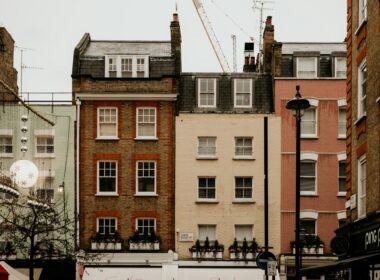London’s prime property market, long a beacon for the global elite, is bracing for a period of turbulence. New tax measures targeting non-domiciled residents and private school fees are expected to stall recovery in the capital’s high-end housing market, according to the latest Savills forecast.
Unlike previous market recoveries, where the top end of the market typically rebounds first, Prime Central London is poised to lag behind.
Prices in the capital’s most exclusive postcodes are predicted to fall by 4% in 2024 before recovering with a modest 10% growth over the next five years.
“The markets of Prime Central London are most directly affected by the abolition of ‘non-dom’ status and an increased stamp duty barrier, both of which are likely to push some of the demand in these areas to the rental market,” explains Nick Maud, director of research at Savills.
Lucian Cook, head of residential research at Savills, adds, “In a normal housing market recovery, you would expect the top end of the market to recover first, responding quickest to a change in sentiment.
However, the additional stamp duty surcharge for second homes, changes in ‘non-doms’ taxation, and VAT on school fees are likely to offset some of the impacts of future cuts in interest rates this time around.”
Demand in outer London and suburbs drives growth
While Prime Central London wrestles with tax pressures, the outlook is rosier for outer prime London markets, including areas like Fulham, Chiswick, Wandsworth, and Islington. These markets, dominated by needs-based buyers and more insulated from international tax changes, are forecast to grow by 14.7% over the next five years.
“While there are reasonable prospects for price growth in these markets over the medium term, we expect prices to remain flat next year for the best properties,” says Cook.
Falling mortgage rates will play a crucial role in stabilising these areas, enabling local buyers to re-enter the market.
The regions beyond London are expected to outshine their metropolitan counterparts. Prime regional markets are forecast to grow by 18.2% by 2029, driven by families seeking a balance between affordability, commutability, and access to quality schooling.
“Coastal second-home hotspots are likely to remain fairly price-sensitive next year,” says Cook, “but elsewhere, prime regional housing markets are likely to benefit from some displaced demand as families look to strike a balance between house prices, commutability, and access to schooling.”
Even with a projected dip in luxury housing demand in 2024, the outlook for 2025 appears brighter, with an anticipated 2% growth in prime regional markets as economic conditions stabilise.
What’s next for London’s prime market?
The UK’s high-end housing sector is entering a transformative phase, influenced heavily by tax changes and shifting buyer priorities. As non-dom tax measures take hold, some international interest may pivot to rentals or regions outside the capital.
For now, the path forward hinges on how quickly sentiment and policy can align to restore confidence in Prime Central London. Meanwhile, the resilience of outer London and regional markets underscores the evolving dynamics of the UK’s luxury property landscape—a shift that could redefine what it means to be “prime.”




